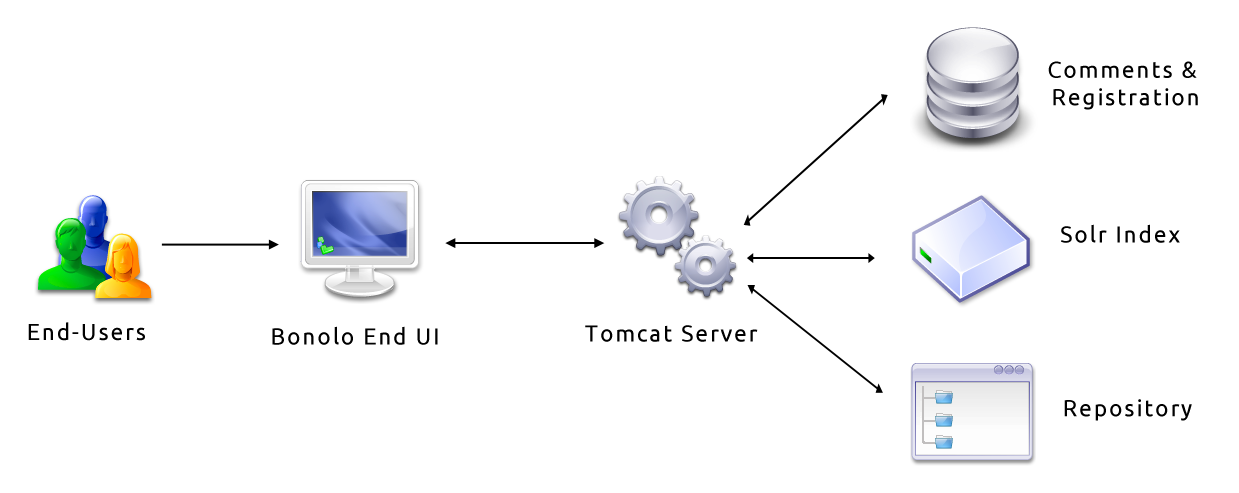Introduction
The end-user interface provides a set of tools that allows the users to search and browse the information stored within the repository. The aim of this interface is to provide users with a way to access the metadata and images stored within the repository without compromising the overall user experience. Succeeding in meeting this aim will provide the end-user with a system that is transparent and responsive, despite the simple hierarchical file store used.
Problem Statement
Databases and other complex data structures can make the discovery of digitised information robust and fast for the end-user. However, this poses a number of problems when it comes to distributing and preserving digitised information. Databases present problems of not being easy to set-up, their data is not easily exportable and transferrable, and often database software is not platform-independent. This leads to confusion as to how to disseminate information and also how to make this information preservable in the future. These problems raise the question of whether one needs to use databases in constructing a digital repository system or whether using a simpler data structure is possible.
Motivation
The motivation behind the Bonolo end-user interface is to try and address the problems identified in the problem statement. The development of a generalised end-user interface built on a simple file store exposes the possibilities of allowing for the simple and rapid creation of new digital repositories.
Developing an open-source end-user interface, coupled with its generic feature set, has the potential to be used by all kinds of people in making data accessible and discoverable to its users. In addition to this, the open-source nature of the Web application would allow developers to take advantage of its extensibility and componentisation. Thus, helping to create a more robust digital repository system.
Using a hierarchical file store has expected disadvantages when it comes to response times and robustness. However, removing the need for databases makes the digital collection more easily preservable, more readily accessible by end-users, more extensible for developers and more easily distributable by curators. This project explores whether a non-database solution is, in fact, viable. And if it is viable, how will its consequences affect the Digital Library community?
Research Questions
Given a generalised XML-centric digital collection – the Bleek and Lloyd notebooks – can an end-user interface be developed that provides an experience that is beneficial and responsive to the end-user, while still maintaining the simple file structure of the digital collection?
The Bonolo project addresses three research questions that will meet this abovementioned aim. The three questions that apply to the end-user interface are as follows:
- Will using a simple file hierarchy as a file store affect the overall end-user experience when using the end-user interface?
- What is the impact of using a hierarchical file-based data store on the performance of the end-user interface?
- Is it possible to create an end-user interface, built on a simple file store that is comparable to other digital repository systems?
Framework
 (Click for the full sized image)
(Click for the full sized image)